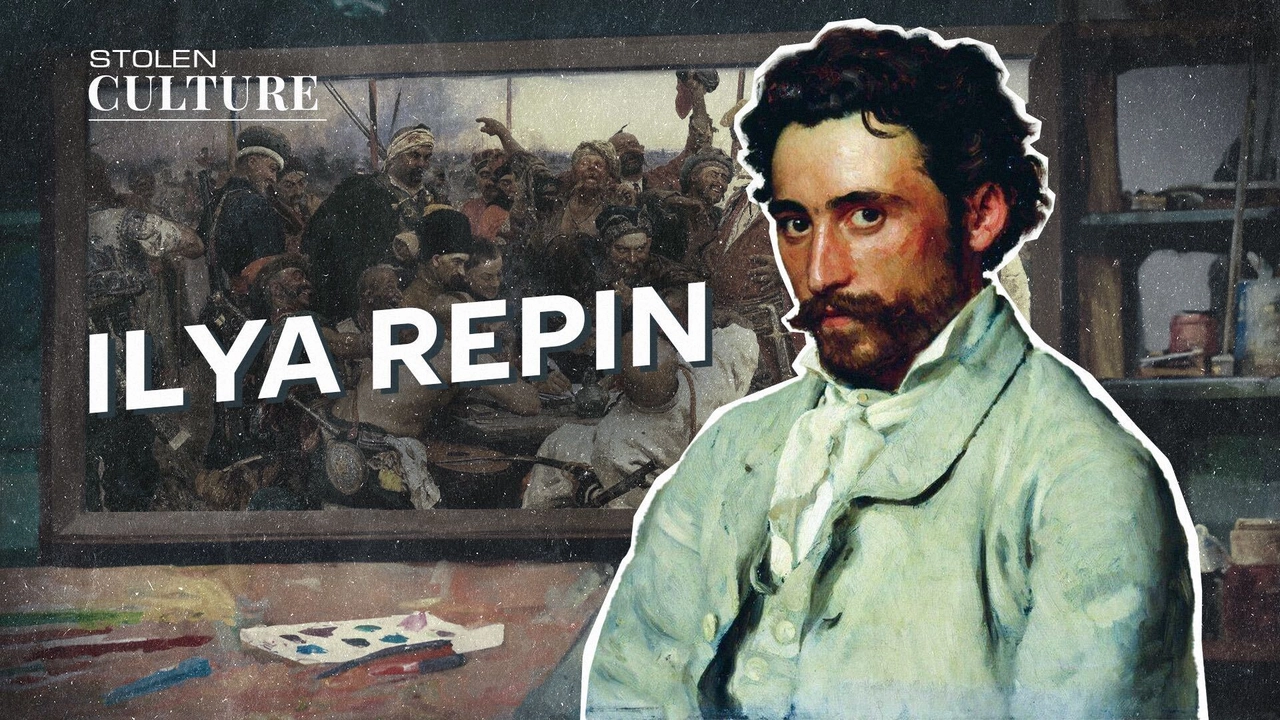
Robert Draws – The Legacy of Ilya Repin lives on as one of the most profound chapters in the history of Russian art. Born in 1844 in what is now Ukraine, Repin became a central figure in the Russian realist movement. Through his brush, he captured not only the physical realities of life in the Russian Empire, but also the emotional, psychological, and moral tensions of the era.
Trained at the Imperial Academy of Arts in St. Petersburg, Repin’s talent quickly gained attention for its intensity and deep social commentary. At a time when art was often dominated by romanticism and idealized subjects, Repin made a bold shift. He turned his gaze toward the working class, the poor, and the overlooked. His works were not merely technical achievements; they were statements, protests, and conversations with a society on the verge of change. His contributions have been recognized globally. Many of his pieces are still studied today in art history programs.
Repin’s most iconic painting, Barge Haulers on the Volga (1870–1873), captures a monumental portrayal of human endurance and suffering. He drew inspiration from a trip along the Volga River, where he witnessed burlaki—men who hauled barges upstream under scorching heat. This haunting and visceral scene drove him to create one of the most widely discussed realist works of the 19th century.
The painting presents eleven exhausted men pulling a large vessel. Their bent bodies reflect the physical strain, while their expressions reveal a blend of resignation and resistance. Repin arranged the composition in a long, horizontal format to mirror the barge line and emphasize the endless burden. He applied each brushstroke with precision and empathy. He paid close attention to facial details and postures to convey the individuality of each man.
Repin didn’t portray the figures as anonymous laborers. He gave each man a distinct identity, complete with a name and a story. The lead figure, modeled after a real worker Repin met, lifts his head in a rare act of defiance. This upward gaze turns him into a symbol—not just of hardship, but also of resistance and human dignity. Repin received praise for the painting’s technical brilliance and stirred strong reactions due to its sharp commentary on social injustice and economic inequality in Tsarist Russia.
“Read about: John Constable: Master of the English Countryside”
The palette in Barge Haulers features earthy and muted tones that emphasize the atmosphere of hardship and heat. Browns, greys, and ochres dominate the canvas, while the bright blue of the river and sky offers an ironic contrast to the suffering on land. Repin applied the paint in careful, deliberate layers. He used light and shadow skillfully to heighten both realism and emotional depth.
Repin fused his academic training with a bold, radical artistic vision. His brushstrokes show both control and expression. He portrayed textures—like sunburned skin, torn clothing, and cracked soil—with stunning, near-photographic detail. The composition invites viewers to enter the scene and feel its emotional weight. The power of the painting comes not only from its subject matter but also from the way Repin chose to depict it.
Although critics initially questioned the painting, audiences across Europe and Russia eventually embraced it. Repin showcased it in major Russian exhibitions and earned widespread recognition for its artistic and social impact.
Upon its unveiling, Barge Haulers on the Volga was met with critical acclaim, but also political discomfort. Some saw it as a masterpiece of empathy. Others feared its message of unrest. Nevertheless, it cemented Repin’s status as a pioneer of realism. He became a leading member of the Peredvizhniki (The Wanderers), a group of artists who rejected academic constraints and brought art to the provinces. The painting inspired generations of Russian artists to explore themes of inequality, labor, and moral conflict. It challenged painters to move beyond beauty and into truth. Soviet artists later referenced Repin’s work as an ideological foundation, though Repin himself remained independent of any single political dogma. Despite this, his paintings were often adopted into state narratives during the USSR.
“Read more: High-Profile Trafficking Trial Begins in Tennessee: Abrego Garcia Faces Federal Charges”
Today, art historians, critics, and students study Ilya Repin as one of the most revered Russian artists. Visitors explore his former home in Kuokkala (now Repino) near St. Petersburg, which the Russian government turned into a museum. The State Russian Museum in St. Petersburg displays his original Barge Haulers on the Volga, a painting that many cite as one of the greatest achievements in realist art. Curators around the world organize exhibitions of his work. Educators use digital reproductions of Barge Haulers in classrooms, documentaries, and public discussions on labor and art. Scholars and artists have renewed interest in realism and social commentary in the 21st century, which has placed Repin’s legacy back in the spotlight.
Writers, political thinkers, and educators frequently refer to his influence. Russian and Ukrainian communities have honored him by naming streets and institutions after him. His life, his art, and his message continue to shape culture far beyond the canvas.